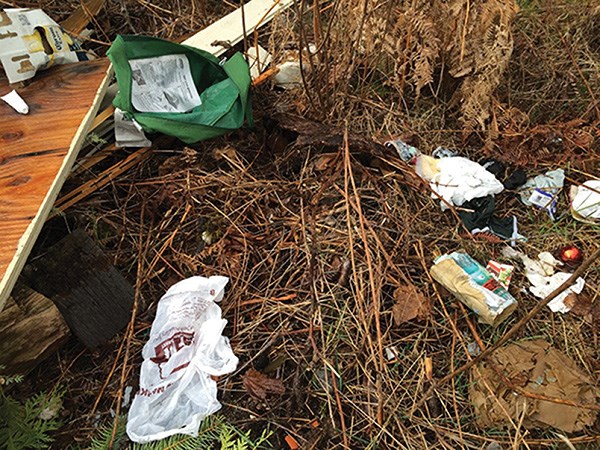Despite all the district education initiatives and programs, Squamish residents and businesses still aren’t doing a good enough job diverting recyclables and organics from the landfill.
In fact, at the rate the community is going, the District of Squamish Landfill will be full by 2017, according to solid waste engineers Avery Gottfried and Wilbert Yang of Tetra Tech, who presented the initial findings of the Phase 1 Solid Waste Strategy to council’s committee of the whole Tuesday.
A waste audit was undertaken May 2 to 4 by Tetra Tech that showed more than 65 per cent recyclable material is still winding up in residential garbage trucks, including paper, plastics and organics.
“Overall, what we saw when we looked at everything together, it’s still about 35 per cent organic material in the garbage,” said Gottfried. Household hygiene products – diapers and pet waste, such as kitty litter – accounted for 17 per cent, and 13 per cent of the garbage tested was paper and 13 per cent plastics. Six per cent of the overall waste was building materials, according to Gottfried.
“It seems to me… that we should be doing much better,” said Mayor Patricia Heintzman.
Council directed staff to move ahead immediately with the design of vertical expansion for the site.
According to the solid waste engineers, vertical expansion is the most cost-effective and practical solution to deal with the problem of increasing garbage, and the project can be started this year. Vertical expansion could provide five to seven years of life to the landfill, during which time staff and council could look at other longer-term options for waste such as horizontal expansion or transporting the waste outside of the municipality, the engineers told council.
Phased in over 10 years, capital costs for vertical expansion are estimated between $4.5 million and $8 million, plus operating costs of up to $1million annually, according to the presentation. Without a carbon-capture system for the landfill, the engineers estimate the landfill creates about 19,000 metric tonnes of carbon dioxide per year, so the proposed design will include a mechanism for future landfill gas recovery, as directed by the committee.
Committee members also directed staff to come back with some bylaw amendment proposals that would see some materials, such as construction and demolition waste, banned from the landfill over a phased-in period.
Fourteen per cent of commercial and institutional waste taken to the landfill is construction or demolition materials, according to the solid waste engineers.
“Given the amount of education and awareness that has taken place over the last seven years, staff feel that it is time to join many other communities and phase in a ban of these materials over the next few years,” the district’s Rod MacLeod wrote in a memo to council.
MacLeod said although the curbside organics collection diverted close to 1,000 tonnes of organics and the recycling program diverted 900 tonnes from the landfill in 2015, “they have not been able to reduce the amount of waste that goes to the landfill per person over previous years.”
District staff will next work with the consultants on the design phase of the vertical expansion of the landfill, and staff will come back with a plan as part of the 2017 budget in the fall.



